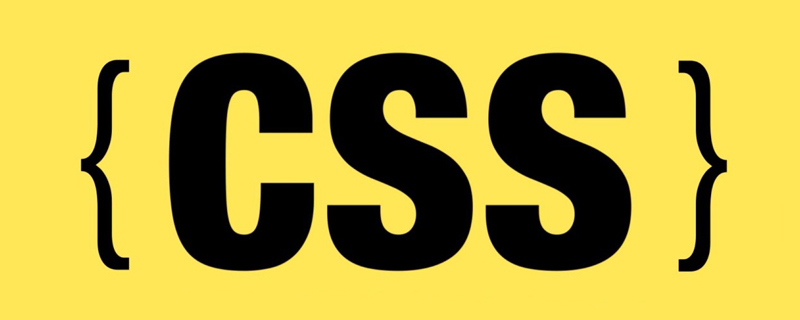
What is the difference between W3C standards and Web standards? Specific code examples are needed
In Web development, we often hear arguments about W3C standards and Web standards. Although they sound similar, they are actually two different concepts that refer to different concepts and specifications. This article will explain the differences between W3C standards and Web standards in detail, and provide some specific code examples to aid understanding.
W3C (World Wide Web Consortium) is a non-profit organization that develops and promotes standards for Web technology. W3C standards refer to a series of specifications and technical standards developed and recommended by W3C, covering all aspects of Web development, including HTML, CSS, JavaScript, XML, etc. These standards are developed by W3C working groups composed of experts and undergo rigorous review and testing to ensure the interoperability and sustainable development of Web technology.
Web standards refer to a set of specifications and best practices followed in web development, aiming to ensure good compatibility and consistency of websites on different browsers and devices. It includes W3C standards, but is not limited to them. Web standards also include specifications and rules developed by other institutions and groups, such as the JavaScript language specification developed by ECMA International, the HTML Living Standard developed by WHATWG, etc.
To understand the difference between W3C standards and Web standards, we can illustrate it through a specific code example.
Suppose we want to create a web page that displays a simple layout with a title and text on the page. Here is a sample code that uses HTML and CSS to implement this layout:
HTML part:
<!DOCTYPE html>
<html>
<head>
<title>Web标准示例</title>
<link rel="stylesheet" href="styles.css">
</head>
<body>
<div class="container">
<h1 id="欢迎光临">欢迎光临</h1>
<p>这是一个简单的示例网页。</p>
</div>
</body>
</html>CSS part (styles.css):
.container {
text-align: center;
margin-top: 100px;
}
h1 {
font-size: 24px;
}
p {
font-size: 18px;
}In this example, we HTML is used to define the structure of the page, and CSS is used to specify the style of the page. This complies with the concept of web standards because we follow the HTML and CSS specifications.
At the same time, this example also complies with W3C standards because we use HTML and CSS properties and values that have been standardized by W3C. For example, we use <h1></h1>, <p></p> and other HTML tags, which are clearly defined in the HTML specification. We also use CSS properties such as text-align, margin-top, etc., which are also defined in the W3C standard.
It should be noted that although there is overlap between W3C standards and Web standards, not all code that follows Web standards conforms to W3C standards. Web standards focus more on the consistency and compatibility of the structure and style of web pages, while W3C standards focus more on formulating specifications and standards for various Web technologies.
To sum up, W3C standards are a series of Web technology standards developed and recommended, and Web standards are a set of norms and best practices to be followed. Together, they provide us with the basis for creating Web pages with good compatibility and consistency, and promote the development and progress of Web technology.
Reference resources:
- W3C official website: https://www.w3.org/
- MDN Web Docs: https://developer.mozilla. org/zh-CN/
The above is the detailed content of What is the difference between w3c standards and web standards?. For more information, please follow other related articles on the PHP Chinese website!
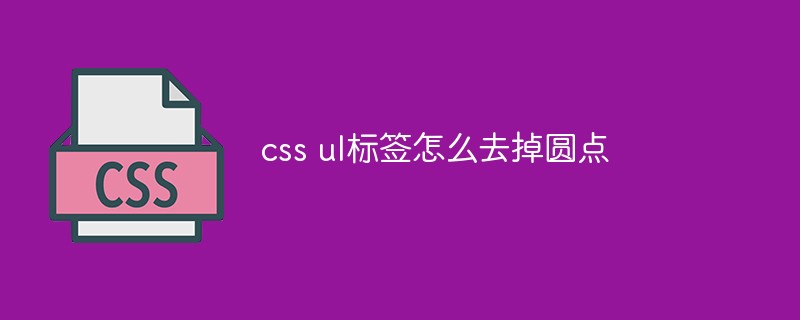 css ul标签怎么去掉圆点Apr 25, 2022 pm 05:55 PM
css ul标签怎么去掉圆点Apr 25, 2022 pm 05:55 PM在css中,可用list-style-type属性来去掉ul的圆点标记,语法为“ul{list-style-type:none}”;list-style-type属性可设置列表项标记的类型,当值为“none”可不定义标记,也可去除已有标记。
 css与xml的区别是什么Apr 24, 2022 am 11:21 AM
css与xml的区别是什么Apr 24, 2022 am 11:21 AM区别是:css是层叠样式表单,是将样式信息与网页内容分离的一种标记语言,主要用来设计网页的样式,还可以对网页各元素进行格式化;xml是可扩展标记语言,是一种数据存储语言,用于使用简单的标记描述数据,将文档分成许多部件并对这些部件加以标识。
 css3怎么实现鼠标隐藏效果Apr 27, 2022 pm 05:20 PM
css3怎么实现鼠标隐藏效果Apr 27, 2022 pm 05:20 PM在css中,可以利用cursor属性实现鼠标隐藏效果,该属性用于定义鼠标指针放在一个元素边界范围内时所用的光标形状,当属性值设置为none时,就可以实现鼠标隐藏效果,语法为“元素{cursor:none}”。
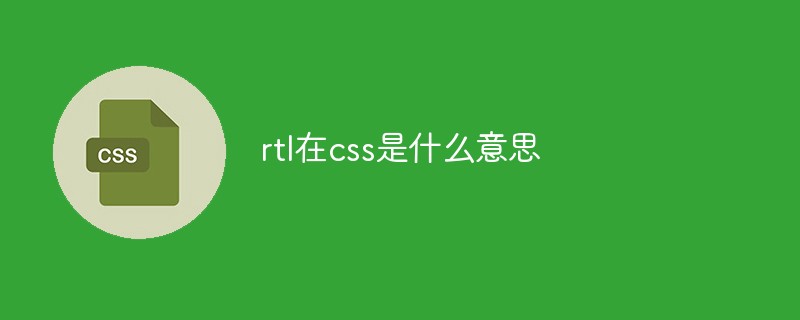 rtl在css是什么意思Apr 24, 2022 am 11:07 AM
rtl在css是什么意思Apr 24, 2022 am 11:07 AM在css中,rtl是“right-to-left”的缩写,是从右往左的意思,指的是内联内容从右往左依次排布,是direction属性的一个属性值;该属性规定了文本的方向和书写方向,语法为“元素{direction:rtl}”。
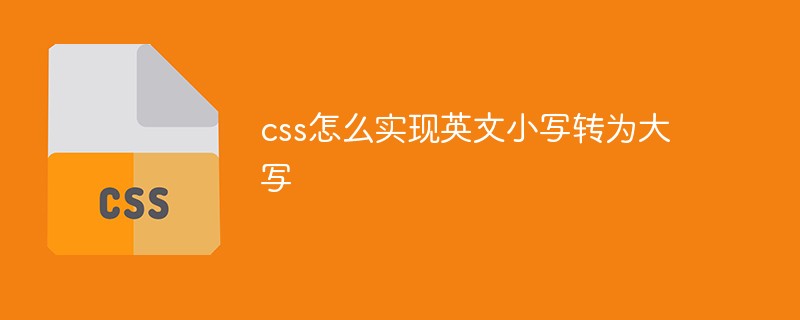 css怎么实现英文小写转为大写Apr 25, 2022 pm 06:35 PM
css怎么实现英文小写转为大写Apr 25, 2022 pm 06:35 PM转换方法:1、给英文元素添加“text-transform: uppercase;”样式,可将所有的英文字母都变成大写;2、给英文元素添加“text-transform:capitalize;”样式,可将英文文本中每个单词的首字母变为大写。
 css怎么设置i不是斜体Apr 20, 2022 am 10:36 AM
css怎么设置i不是斜体Apr 20, 2022 am 10:36 AM在css中,可以利用“font-style”属性设置i元素不是斜体样式,该属性用于指定文本的字体样式,当属性值设置为“normal”时,会显示元素的标准字体样式,语法为“i元素{font-style:normal}”。
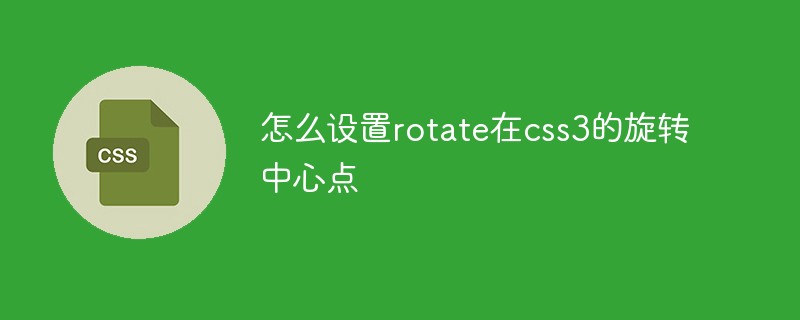 怎么设置rotate在css3的旋转中心点Apr 24, 2022 am 10:50 AM
怎么设置rotate在css3的旋转中心点Apr 24, 2022 am 10:50 AM在css3中,可以用“transform-origin”属性设置rotate的旋转中心点,该属性可更改转换元素的位置,第一个参数设置x轴的旋转位置,第二个参数设置y轴旋转位置,语法为“transform-origin:x轴位置 y轴位置”。


Hot AI Tools

Undresser.AI Undress
AI-powered app for creating realistic nude photos

AI Clothes Remover
Online AI tool for removing clothes from photos.

Undress AI Tool
Undress images for free

Clothoff.io
AI clothes remover

AI Hentai Generator
Generate AI Hentai for free.

Hot Article

Hot Tools

Zend Studio 13.0.1
Powerful PHP integrated development environment

Notepad++7.3.1
Easy-to-use and free code editor

Atom editor mac version download
The most popular open source editor

SAP NetWeaver Server Adapter for Eclipse
Integrate Eclipse with SAP NetWeaver application server.

MinGW - Minimalist GNU for Windows
This project is in the process of being migrated to osdn.net/projects/mingw, you can continue to follow us there. MinGW: A native Windows port of the GNU Compiler Collection (GCC), freely distributable import libraries and header files for building native Windows applications; includes extensions to the MSVC runtime to support C99 functionality. All MinGW software can run on 64-bit Windows platforms.






